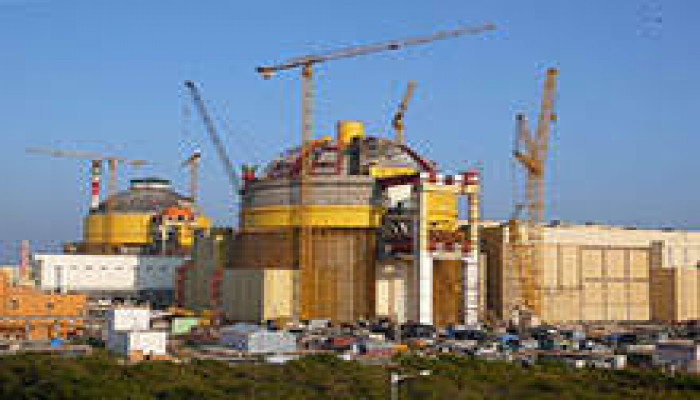India's most advanced nuclear reactor receives approval
- In Reports
- 09:06 PM, Jul 30, 2024
- Myind Staff
India's atomic energy program has achieved a significant milestone with the approval for its most advanced and complex nuclear reactor, the Prototype Fast Breeder Reactor (PFBR), located in Kalpakkam, Tamil Nadu. The Atomic Energy Regulatory Board has authorised the reactor to start loading nuclear fuel and initiate a controlled chain reaction. Dinesh Kumar Shukla, Chairman of the Atomic Energy Regulatory Board, described this development as a major step forward for India's self-reliant nuclear energy program, highlighting that the PFBR is designed to be inherently safe.
This progress marks the beginning of using plutonium as a nuclear fuel and represents a crucial step towards utilising thorium as an energy source. Given India's limited uranium reserves and the fact that all plutonium is produced in atomic plants, the country is focusing on harnessing its vast thorium reserves. Experts believe that if India can successfully use thorium as fuel, it could achieve energy independence and secure a sustainable energy source for over three centuries.
Fast breeder reactors are quite unique and may seem counterintuitive to those unfamiliar with them, as they generate more fuel than they consume, which some describe as an endless energy source. The term 'fast' refers to the use of high-energy fast neutrons in these reactors. India already operates a Fast Breeder Test Reactor (FBTR) at Kalpakkam, which has been in operation for the past 39 years.
The Atomic Energy Regulatory Board (AERB) has recently granted permission for the next step in the development of the Prototype Fast Breeder Reactor (PFBR). This 500 MWe sodium-cooled reactor, being developed by BHAVINI at Kalpakkam, represents a significant advancement in the country's nuclear power program.
The AERB emphasised that this approval is a major milestone and has been preceded by extensive safety reviews through a multi-tiered safety review process, including regular inspections and oversight by a resident site observer team. If everything proceeds smoothly, the PFBR could become operational within a few months.
In 2003, the Indian government approved the establishment of Bhartiya Nabhikiya Vidyut Nigam Ltd (BHAVINI) to oversee the construction and operation of India's most advanced nuclear reactor, the Prototype Fast Breeder Reactor (PFBR). This 500 MW reactor is cooled by liquid sodium. According to BHAVINI, the reactor has now received clearance for fuel loading, achieving first criticality, and conducting low-power physics experiments all at once.
The initiation of fuel loading at PFBR signifies India's entry into the second stage of its atomic energy program, utilizing spent fuel from existing reactors. The term 'fast' in this context refers to the use of high-energy 'fast neutrons' in the fission process, rather than the speed of construction. The reactor employs plutonium, a man-made element, as fuel.
The PFBR has been under development for the past 20 years. As a pioneering reactor, it faced expected delays due to its complexity and the lack of shared technology from other countries, necessitating indigenous expertise. BHAVINI estimates the project has cost ₹6,840 crore, reflecting a cost overrun from the initially approved budget of ₹5,677 crore.
In line with the Aatmanirbhar Bharat initiative, the Prototype Fast Breeder Reactor (PFBR) has been designed and constructed entirely by BHAVINI, with substantial input from over 200 Indian industries, including many MSMEs. Once operational, India will become only the second country, after Russia, to have a commercially functioning Fast Breeder Reactor.
The PFBR will initially use Uranium-Plutonium Mixed Oxide (MOX) fuel. The reactor's Uranium-238 "blanket" surrounding the fuel core will undergo nuclear transmutation, producing additional fuel and thus earning the 'Breeder' designation. In this stage, the use of Thorium-232, which is not itself a fissile material, is also planned. Through transmutation, Thorium-232 will generate fissile Uranium-233, which will be utilised in the third stage of India's atomic energy program. The FBR thus serves as a crucial stepping stone towards the complete use of India's extensive thorium reserves.
On March 4, 2024, Prime Minister Narendra Modi personally inspected the Prototype Fast Breeder Reactor (PFBR) and observed the 'core loading' process. Since then, activities at the plant have accelerated. The Department of Atomic Energy (DAE) highlights that the PFBR is an advanced third-generation reactor with inherent passive safety features, ensuring a prompt and secure shutdown in emergency situations.
The PFBR's use of spent fuel from earlier reactors offers a significant advantage by greatly reducing nuclear waste, thus minimising the need for extensive geological disposal facilities. Despite the advanced technology, the DAE notes that both the capital cost and the per unit electricity cost of the PFBR are comparable to those of other nuclear and conventional power plants.
The expansion of India’s nuclear power program is crucial for achieving both energy security and sustainable development. As a responsible nuclear power with advanced technology, India is dedicated to advancing peaceful uses of nuclear technology across both power and non-power sectors while maintaining strict security for nuclear and radiological materials.
Once the Department of Atomic Energy (DAE) is satisfied with the performance and safety of the Prototype Fast Breeder Reactor (PFBR), plans are in place to construct two additional Fast Breeder Reactors at Kalpakkam.
Image Source: Power Technology







Comments